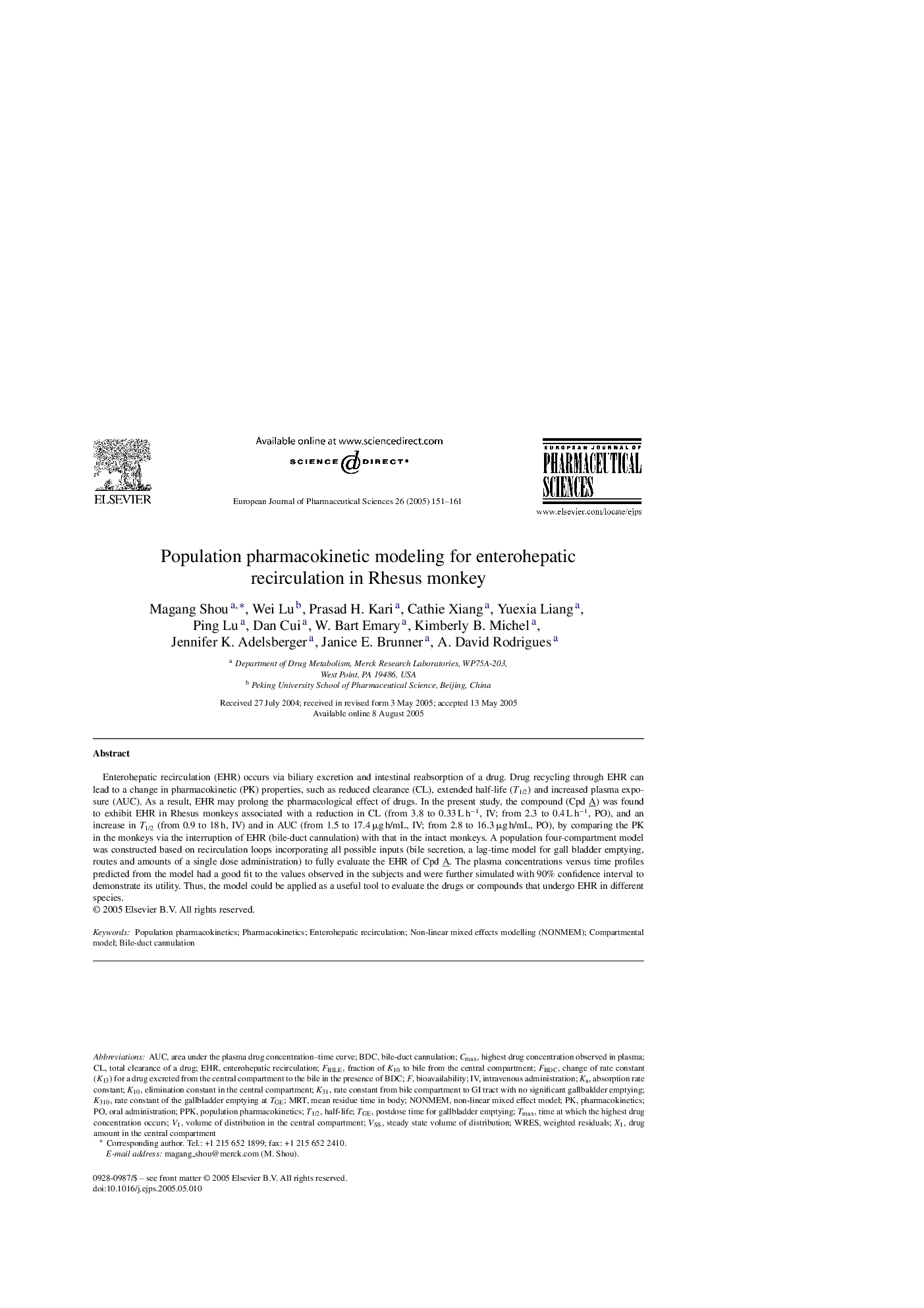| Article ID | Journal | Published Year | Pages | File Type |
|---|---|---|---|---|
| 9917615 | European Journal of Pharmaceutical Sciences | 2005 | 11 Pages |
Abstract
Enterohepatic recirculation (EHR) occurs via biliary excretion and intestinal reabsorption of a drug. Drug recycling through EHR can lead to a change in pharmacokinetic (PK) properties, such as reduced clearance (CL), extended half-life (T1/2) and increased plasma exposure (AUC). As a result, EHR may prolong the pharmacological effect of drugs. In the present study, the compound (Cpd A) was found to exhibit EHR in Rhesus monkeys associated with a reduction in CL (from 3.8 to 0.33 L hâ1, IV; from 2.3 to 0.4 L hâ1, PO), and an increase in T1/2 (from 0.9 to 18 h, IV) and in AUC (from 1.5 to 17.4 μg h/mL, IV; from 2.8 to 16.3 μg h/mL, PO), by comparing the PK in the monkeys via the interruption of EHR (bile-duct cannulation) with that in the intact monkeys. A population four-compartment model was constructed based on recirculation loops incorporating all possible inputs (bile secretion, a lag-time model for gall bladder emptying, routes and amounts of a single dose administration) to fully evaluate the EHR of Cpd A. The plasma concentrations versus time profiles predicted from the model had a good fit to the values observed in the subjects and were further simulated with 90% confidence interval to demonstrate its utility. Thus, the model could be applied as a useful tool to evaluate the drugs or compounds that undergo EHR in different species.
Keywords
Related Topics
Health Sciences
Pharmacology, Toxicology and Pharmaceutical Science
Drug Discovery
Authors
Magang Shou, Wei Lu, Prasad H. Kari, Cathie Xiang, Yuexia Liang, Ping Lu, Dan Cui, W. Bart Emary, Kimberly B. Michel, Jennifer K. Adelsberger, Janice E. Brunner, A. David Rodrigues,
